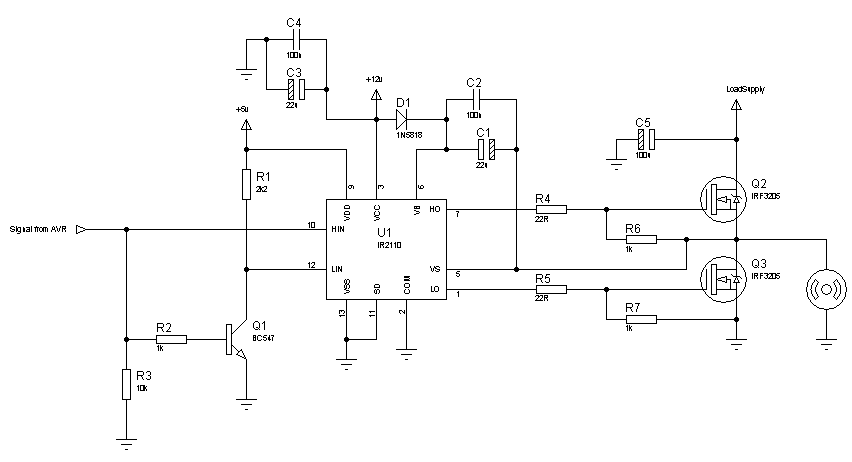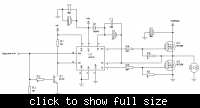adityo.kusumo
Newbie level 5

- Joined
- May 21, 2010
- Messages
- 8
- Helped
- 4
- Reputation
- 8
- Reaction score
- 4
- Trophy points
- 1,283
- Location
- Indonesia
- Activity points
- 1,492
This is my first post here, i need help on my final year project to make a grid connected inverter.
For the full bridge inverter circuit i planned to use IRF2807 (75V Vds, 82A Ids) and Two IR2110 for the driver. I never use IR2110 before and failed many time when i want to make a H-Bridge for DC motor last year. Hopefully after asking you guys i can get enlightenment for my final year project.
I planned to design the circuit based on this sample project that i get from another website :
**broken link removed**
i have some question about the schematic since the specification is quiet different.
My DC input voltage is 34V (2 series solar panel), The power rating is about 100Watt so the MOSFET should able to drain about 10A max current. The output of the inverter will be connected to 18V - 220V step up transformer. My controller will use hysteresis current control method so the switching frequency is not fixed and varied up to 100kHz.. and i want to isolate (different ground) between my micro controller and power circuit. How can i use the optocoupler to isolate it? is there any optically isolated buffer since i planned to use buffer (micro controller (ATmega 8535, 16MHz -> Buffer IC -> Optocoupler -> IR2110)
Based on my specification, is there any component that i should change? i read before to change the diode to the fast recovery one, and change the resistor value..
i will appreciate any suggestion or critics, thanks in advance.. :razz:
For the full bridge inverter circuit i planned to use IRF2807 (75V Vds, 82A Ids) and Two IR2110 for the driver. I never use IR2110 before and failed many time when i want to make a H-Bridge for DC motor last year. Hopefully after asking you guys i can get enlightenment for my final year project.
I planned to design the circuit based on this sample project that i get from another website :
**broken link removed**
i have some question about the schematic since the specification is quiet different.
My DC input voltage is 34V (2 series solar panel), The power rating is about 100Watt so the MOSFET should able to drain about 10A max current. The output of the inverter will be connected to 18V - 220V step up transformer. My controller will use hysteresis current control method so the switching frequency is not fixed and varied up to 100kHz.. and i want to isolate (different ground) between my micro controller and power circuit. How can i use the optocoupler to isolate it? is there any optically isolated buffer since i planned to use buffer (micro controller (ATmega 8535, 16MHz -> Buffer IC -> Optocoupler -> IR2110)
Based on my specification, is there any component that i should change? i read before to change the diode to the fast recovery one, and change the resistor value..
i will appreciate any suggestion or critics, thanks in advance.. :razz:























